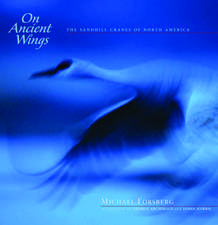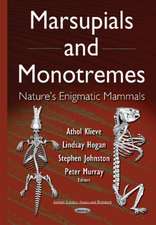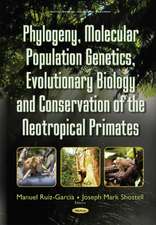Animal Sonar Systems: NATO ASI Subseries A:, cartea 28
Editat de R. Busnelen Limba Engleză Paperback – 15 apr 2013
Preț: 663.48 lei
Preț vechi: 829.35 lei
-20% Nou
Puncte Express: 995
Preț estimativ în valută:
126.97€ • 132.39$ • 105.53£
126.97€ • 132.39$ • 105.53£
Carte tipărită la comandă
Livrare economică 17-22 martie
Preluare comenzi: 021 569.72.76
Specificații
ISBN-13: 9781468472561
ISBN-10: 1468472569
Pagini: 1212
Ilustrații: XXIV, 1135 p.
Dimensiuni: 178 x 254 x 64 mm
Ediția:Softcover reprint of the original 1st ed. 1980
Editura: Springer Us
Colecția Springer
Seria NATO ASI Subseries A:
Locul publicării:New York, NY, United States
ISBN-10: 1468472569
Pagini: 1212
Ilustrații: XXIV, 1135 p.
Dimensiuni: 178 x 254 x 64 mm
Ediția:Softcover reprint of the original 1st ed. 1980
Editura: Springer Us
Colecția Springer
Seria NATO ASI Subseries A:
Locul publicării:New York, NY, United States
Public țintă
ResearchCuprins
Early History of Research on Echolocation.- Behavioral methodology in echolocation by marine mammals.- Detection range and range resolution of echolocating bottlenose porpoise.- Odontocete echolocation performance on object size, shape and material.- Cetacean obstacle avoidance.- Performance of airborne animal sonar systems I. micro-chiroptera.- Performance of airborne biosonar systems II. vertebrates other than microchiroptera.- Functional and descriptive anatomy of the bottlenosed dolphin nasolaryngeal system with special reference to the musculature associated with sound production.- Electromyographic and pressure events in the nasolaryngeal system of dolphins during sound production.- Echolocation signals of the atlantic bottlenose dolphin (Tursiops truncatus) in open waters.- Acoustics and the behavior of sperm whales.- Click sounds from animals at sea.- Signal characteristics for target localization and discrimination.- Echolocation signals and echoes in air.- Echolocation ontogeny in bats.- Adaptiveness and ecology of echolocation in toothed whales.- Adaptiveness and ecology of echolocation in terrestrial aerial systems.- Sound reception in the porpoise as it relates to echolocation.- Behavioral measures of odontocete hearing.- Electrophysiological experiments on hearing in odontocetes.- Peripheral sound processing in odontocetes.- Cetacean brain research: Need for new directions.- Important areas for future cetacean auditory study.- Auditory processing of echoes: peripheral processing.- Organizational and encoding features of single neurons in the inferior colliculus of bats.- Auditory processing of echoes: representation of acoustic information from the environment in the bat cerebral cortex.- Models of cetacean signal processing.- Models for echolocation.- Energy spectrum analysis in echolocation.- The processing of sonar echoes by bats.- Signal processing and design related to bat sonar systems.- Models of spatial information processing in biosonar systems, and methods suggested to validate them.- A new concept of echo evaluation in the auditory system of bats.- Sensing system design using knowledge of animal acoustic systems.- Air sonars with acoustical display of spatial information.- Discrimination of complex information in an artificially generated auditory space using new auditory sensations.- The Role of Cranial Structures in Odontocete Sonar Signal Emission.- Binaural Estimation of Cross-Range Velocity and Optimum Escape Maneuvers by Moths.- Dolphin Whistles as Velocity-Sensitive Sonar/Navigation Signals.- Target Recognition Via Echolocation by Tursiops truncatus.- Sphere-Cylinder Discrimination Via Echolocation by Tursiops truncatus.- Frequency Selectivity of Constant Latency Neurons in the Inferior Colliculus of Mexican Free-Tailed Bats.- Structural Adaptation in the Cochlea of the Horseshoe Bat for the Analysis of Long CF-FM Echolocating Signals.- Similarities in Design Features of Orientation Sounds Used by Simpler, Nonaquatic Echolocators.- Rat Echolocation: Correlations Between Object Detection and Click Production.- Signal Design for Matched Filter Detection in a Reverberation-Limited Environment: Application to Cetacean Echolocation Signals.- Variations in the Characteristics of Pulse Emissions of a Tursiops truncatus During the Approach Process and the Acoustic Identification of Different Polygonal Shapes.- Neural Mechanisms for Target Ranging in an Echolocating Bat Eptesicus fuscus.- Hunting Strategies and Echolocating Performance of Bats — Quantitative Behavioral Laboratory Analysis.- Low-FrequencyReceiver of the Middle Ear in Mysticetes and Odontocetes.- Morphological Adaptations of the Sound Conducting Apparatus in Echolocating Mammals.- Echolocation Signal Design as a Potential Counter-Countermeasure Against Moth Audition.- Vocalizations of Malaysian Bats Microchiroptera and Megachiroptera.- A Reconstructing Technique for the Nasal Air Sacs System in Toothed Whales.- An Analogue Device for the Generation of Sonar Ambiguity Diagrams.- The Constant Frequency Component of the Biosonar Signals of the Bat, Pteronotus parnellii parnellii.- The Avoidance of Stationary and Moving Obstacles by Little Brown Bats, Myotis lucifugus.- Echolocation and Behavior.- The Function of Lateral Inhibition in the Recognition of Frequency Spectra.- Further Studies of Masking in the Greater Horseshoe Bat, Rhinolophus ferrumequinum.- Dolphin Air Sac Motion Measurements During Vocalization by Two Noninvasive Ultrasonic Methods.- A Theory of the Spermaceti Organ in Sperm Whale Sound Production.- How the Green Lacewing Avoids Bats: Behavior and Physiology.- Cylinder and Cube Shape Discrimination by an Echolocating Blindfolded Bottlenosed Dolphin.- “Range” Information Processing at the Highest Levels of the Auditory System.- The Functional Organisation of the Auditory Cortex in the CF — FM Bat Rhinolophus ferrumequinum.- Tursiops Biosonar Detection in Noise.- Correlation Analysis of Echolocation Pulses.- The Cochlea in Pteronotus parnellii.- Activity of the Recurrent Laryngeal Nerve Due to the Production of Ultrasonic Echolocation Sounds in the CF-FM Bat, Rhinolophus ferrumequinum.- Single Brain Stem Unit Responses to Binaural Stimuli Simulating Moving Sounds in Rhinolophus Ferrumequinum.- Alterations of Auditory Responsiveness by the Active Emission of Echolocation Sounds in theBat, Rhinolophus Ferrumequinum.- Stimulus Control of Echolocation Pulses in Tursiops truncatus.- Response Bias and Attention in Discriminative Echolocation by Tursiops truncatus.- The Auditory Pathway of the Greater Horseshoe Bat, Rhinolophus ferrumequinum.- Grey Seal, Halichoerus: Echolocation Not Demonstrated.- The Role of the Anterior and Posterior Cricothyroid Muscles in the Production of Echolocative Pulses by Mormoopidae.- Coding of Sinusoidally Frequency-Modulated Signals by Single Cochlear Nucleus Neurons of Rhinolophus ferrumequinum.- Single Unit Responses to Frequency-Modulated Sounds and Signal-Noise Combinations. A Comparative Study of the Inferior Colliculus of Molossid Bats.- Ascending Auditory Pathways in the Brain Stem of the Bat, Pteronotus parnellii.- VIII — General Bibliography.- Participants.- Indexes.- Author Index.- Species Index.














